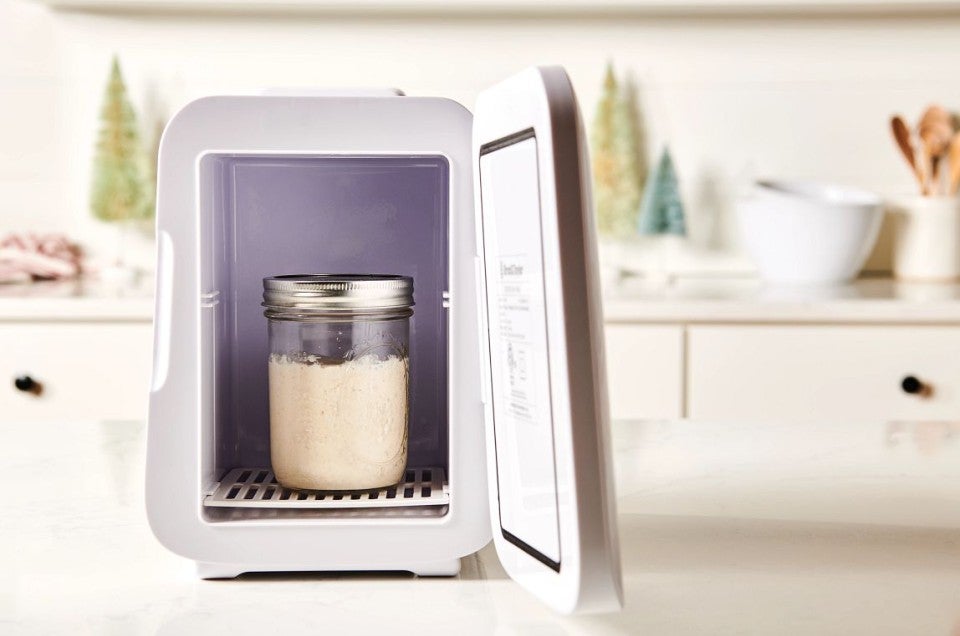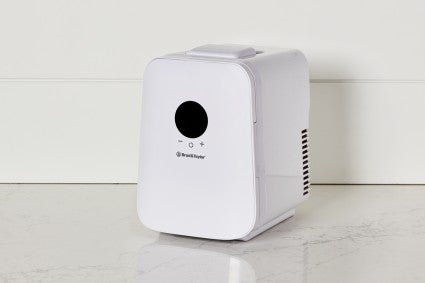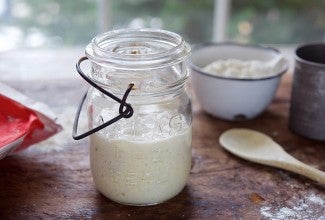Your starter is missing one crucial ingredient: temperature
A cozy Sourdough Home will help you make your best bread yet.


Sourdough starter can prompt a lot of questions. From how often to feed it to ways to use discard to where to store it, bakers keep our hotline busy. But for the answer to that last question (and others, too!), we have a new favorite tool: the Sourdough Home.
The Sourdough Home, from Brod and Taylor, the makers of the small proof box that we love, is a countertop appliance with a temperature dial that can be set to either warm or cold settings ranging from 41°F to 122°F. Whether you’re looking to feed and discard less, improve the quality of your starter, or simply make the best bread that you can, this small device is the tool for you. Let’s look a little closer.

Healthy starter needs two things: consistent food and a stable environment. The food part is simple: If you feed your starter regularly with good flour, you're all set. Environment can be trickier — it's hard to have a stable ambient condition if you keep your starter on the counter, because there are lots of variables, especially as seasons change.
I don’t know about your kitchen, but my house is cold in the winter. While that’s fine for me with my hat and scarf on, my starter doesn’t handle it so well. It slows in activity and my bread suffers. Poor volume, a slow rise, undeveloped flavors — does this sound familiar? And in warm months I see the other end of the spectrum. Hot days lead to overproofed doughs, sticky shaping, and blobs with cuts that don’t open. In both examples, starter temperature and its effect on dough activity is the culprit. But using the temperature dial on the Sourdough Home, I can control temperature and activity, no matter the season. Here’s how.
In warm months I set my own cool “room temperature,” about 72°F on the Sourdough Home. It’s not too hot and not too cold, supporting a stable temperature that allows my starter to double or triple in volume in about eight hours. And in cooler months when starter needs a little encouragement, I set the dial to 75°F and give it a warm place to rise. In both scenarios, I can control the temperature to set the rate of rise. So, whether using my starter for preferments or simply scooping some into a bowl for a straight-to-bake method, I know I'm headed for great fermentation (and bread).

But wait, there’s more — the Sourdough Home can also reduce discard. Using the temperature dial on the Sourdough Home, I can slow the rate of rise to a level that allows me to ignore it for a couple of days, reducing feeding and, subsequently, discard.
Here’s an example. At my house, we often bake on weekends. Before the Sourdough Home, I’d feed my starter on Saturday or Sunday and toss it into the fridge until Thursday morning, when I’d remove it for multiple feeds (producing lots of discard) to revive it. By Friday evening it would be ready to go. An effective system ... but it's fiddly and produces too much waste.
Using the Sourdough Home, I'll feed my starter after a weekend of baking, using a ratio of 1:4:4 (that’s 10 grams of starter, 40 grams of flour, and 40 grams of water; see Brod and Taylor’s FAQ for more detail) and set the temperature to 45°F or 50°F. In the cooler conditions, starter activity slows, enabling me to step away for a few days. And, different than the refrigerator, where the conditions are so cold that the starter effectively stalls, the Sourdough Home slows it down but not too much. Then, eight to 12 hours before I need active sourdough, I feed it, set the dial to 78°F, and watch as activity ramps back up. Less maintenance, less discard, and ready when I want it? What more could you ask for?

And, for the daily bakers out there or those who bake without pause, there is a middle-temperature zone, too. I asked Andrew Janjigian, a frequent blog contributor, baker, and recipe developer, how he’s using his Sourdough Home. He explained that, instead of keeping his starter at room temperature and having to feed it twice a day, "I use my Sourdough Home to hold my starter at 65°F, feeding it once daily, which keeps it happy and active without needing to feed it twice a day.” Yet another example of how the temperature dial can reduce discard (and work) while not shortcutting quality.
So, whether encouraging my starter with a warmer setting or putting on the brakes with cooler conditions, giving my sourdough its own temperature-controlled home has allowed me to bake on my schedule with great results, and it might help you, too.
Looking for more sourdough inspiration? Read on!
Cover photo by Danielle Sykes; food styling by Liz Neily


